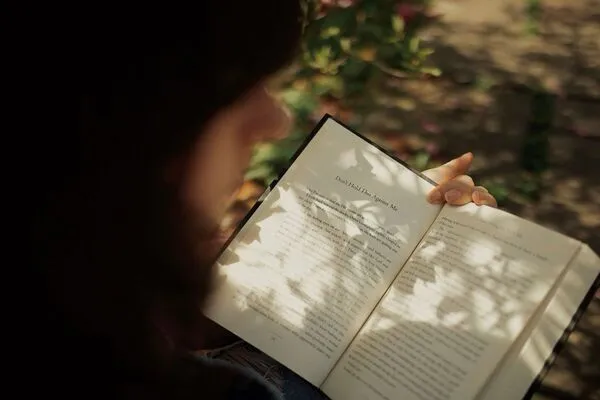Best Books of All Time: Timeless Reads That Define Generations
May 9, 2025

When it comes to the best books of all time, opinions are as diverse as the genres that fill our shelves. Yet, some titles rise above trends, speaking across decades, cultures, and even personal preferences. These are the stories that move us, challenge us, and sometimes completely transform how we see the world. Whether you're a lifelong book lover or just beginning your reading journey, this ultimate guide will take you through the literary masterpieces you simply can’t miss.
Today, reading doesn’t only mean flipping pages. Thanks to the rise of audiobook platforms, timeless literature is now more accessible than ever. Even on your daily commute or while doing chores. This means there’s never been a better time to explore classic and contemporary must-reads, no matter how packed your schedule is.
If you interested in audiobooks too, check out our favorite audiobook picks to get started.
But what exactly makes a book stand the test of time? For some, it’s unforgettable characters; for others, it’s lyrical prose, groundbreaking ideas, or the sheer power of emotional storytelling. From epic fantasies and spine-chilling horror tales to thought-provoking non-fiction, the best books of all time manage to transcend categories. Yet each genre brings something unique to the table.
In the sections below, we’ll dive into carefully selected categories of literary brilliance. Each includes three standout titles with in-depth insights and key details to help you find your next unforgettable read. Let’s turn the page and explore the greatest stories ever written.
Choose Your Next Boox
Best Books of All Time
What makes a book truly timeless? It's not just about literary awards or critical acclaim. It is about emotional resonance, cultural impact, and the ability to speak across generations. The best books of all time are those that continue to shape minds, stir hearts, and ignite conversations long after their publication. These are the novels that readers return to again and again, each time discovering something new.
In this section, we explore three iconic works that have left an indelible mark on literature and society. These books are more than just well-written stories; they are cultural touchstones that have challenged norms, inspired movements, and become essential parts of the global literary canon.
To Kill a Mockingbird

Harper Lee’s To Kill a Mockingbird is not merely a novel. It’s a profound moral compass disguised as a coming-of-age story. Set in the Deep South during the 1930s, the novel chronicles the experiences of young Scout Finch as her father, Atticus, takes on the case of a Black man wrongly accused of raping a white woman. Through Scout's innocent yet observant eyes, readers are introduced to the rigid class and race structures of a small Alabama town, as well as the injustices that lie beneath its polite surface.
The genius of this novel lies in its balance between simplicity and depth. Scout’s childish curiosity softens the heavy themes of racism and prejudice, allowing readers of all ages to digest the narrative without feeling overwhelmed. Atticus Finch, with his unwavering sense of justice, emerges as a literary hero and a moral guidepost for generations. His belief that one must do what is right, even when the odds are stacked against them, remains deeply inspiring in any era.
Book Info- Author: Harper Lee
- Published: 1960
- Genre: Historical Fiction / Legal Drama
- Length: 281 pages
- Topic: Racial injustice, childhood innocence, moral integrity
1984

1984 is George Orwell’s dystopian masterpiece — a terrifying vision of a future where truth is manufactured, history is rewritten, and independent thought is punishable by death. The story follows Winston Smith, a low-level worker in the totalitarian superstate of Oceania, where surveillance is omnipresent and the government — personified by the ever-watching "Big Brother" — controls every facet of life. In a world where language itself is manipulated to limit freedom, Winston dares to rebel.
What makes 1984 so enduring is how uncomfortably close it hits to home — especially in the digital age. Concepts like “Newspeak,” “doublethink,” and “thoughtcrime” have become disturbingly applicable in discussions of fake news, mass surveillance, and algorithmic bias. Orwell’s vision of a reality in which truth is subjective and obedience is absolute continues to be one of the most haunting and prescient warnings in literature.
Stylistically, Orwell combines stark, journalistic prose with philosophical depth. The novel doesn’t just depict a dystopia; it explains how one is built — through fear, erasure of memory, and the slow erosion of critical thinking. 1984 is not a comfortable read, but it is a necessary one. It forces readers to ask hard questions about freedom, individuality, and the dangerous allure of authoritarian control.
Book Info- Author: George Orwell
- Published: 1949
- Genre: Dystopian Fiction
- Length: 328 pages
- Topic: Totalitarianism, surveillance, psychological control
Pride and Prejudice

Jane Austen’s Pride and Prejudice is a brilliant social commentary disguised as a charming love story or perhaps the other way around. At its center is Elizabeth Bennet, a woman far ahead of her time, who refuses to accept a life defined by societal expectations and economic dependence. When she crosses paths with the seemingly aloof Mr. Darcy, sparks fly not from passion alone, but from intellect, pride, and a fair bit of misunderstanding.
While often celebrated as a romance, Pride and Prejudice is so much more. It deftly critiques the limitations placed on women in 19th-century England, particularly the notion that marriage was their only viable future. Austen’s wit shines in every line, with biting observations about class, vanity, and gender roles that remain startlingly relevant. Elizabeth’s journey toward self-awareness and her eventual realization that pride and prejudice can be mutual flaws is both relatable and refreshing.
Austen's narrative voice is unmatched in its irony and intelligence, making the novel a delightful read even for modern audiences. And Darcy? He’s become the blueprint for every brooding romantic hero since. If you think you know Pride and Prejudice just from adaptations, you owe it to yourself to read the original and meet the full force of Austen’s literary brilliance.
Book Info- Author: Jane Austen
- Published: 1813
- Genre: Classic Romance / Social Satire
- Length: 432 pages
- Topic: Class, gender roles, marriage, self-growth
Best Fiction Books of All Time
Fiction is the heart of storytelling. The lens through which we explore humanity, confront our deepest fears, and experience worlds beyond our own. The best fiction books of all time are not just captivating tales; they are profound meditations on the human condition. These novels invite us to walk in someone else’s shoes, to feel emotions we've never felt, and to ask questions we've never considered. From sprawling epics to intimate character studies, fiction gives us the freedom to dream, challenge, and connect.
This category celebrates novels that have stood the test of time not only because of their literary excellence, but also because of their emotional and philosophical depth. They’ve moved generations of readers, sparked cultural conversations, and inspired countless adaptations. Whether you’re a lover of lyrical prose, deep character arcs, or philosophical undertones, these fiction masterpieces offer something extraordinary.
The Great Gatsby

F. Scott Fitzgerald’s The Great Gatsby is a glittering, tragic portrayal of the American Dream gone sour. Set in the roaring 1920s, it tells the story of Jay Gatsby, a mysterious millionaire known for his lavish parties and obsessive love for Daisy Buchanan, a woman from his past. Narrated by the introspective Nick Carraway, Gatsby’s tale is one of unfulfilled desire, self-invention, and the harsh reality behind glamorous façades.
At first glance, the novel dazzles with its depictions of opulence, jazz-age decadence, and champagne-fueled nights. But just beneath the surface lies a deeply melancholic narrative about longing and illusion. Gatsby’s dream to rewrite the past and recreate a perfect love. Becomes a metaphor for America’s own idealistic pursuit of success and happiness. Yet Fitzgerald reveals how that dream can be hollow, manipulated, or outright unattainable for many.
Stylistically, Fitzgerald’s prose is both poetic and precise, laced with symbolism and striking imagery. From the green light at the end of Daisy’s dock to the haunting eyes of Dr. T.J. Eckleburg, every element of The Great Gatsby is rich with meaning. It's a short novel, but its emotional and thematic weight is immense making it a cornerstone of modern American fiction.
Book Info- Author: F. Scott Fitzgerald
- Published: 1925
- Genre: Literary Fiction
- Length: 180 pages
- Topic: The American Dream, love, wealth, illusion
Beloved

Toni Morrison’s Beloved is a haunting and poetic exploration of slavery’s long and painful shadow. The novel follows Sethe, an escaped enslaved woman in post-Civil War Ohio, who is haunted both figuratively and literally by the ghost of her baby daughter. When a mysterious young woman named Beloved appears, Sethe’s traumatic past resurfaces with brutal clarity.
What sets Beloved apart is Morrison’s fearless excavation of generational trauma and the psychological scars left by slavery. The novel doesn’t just recount historical atrocities; it inhabits them, gives them voice, and forces readers to confront their legacy. Morrison's nonlinear narrative structure mirrors the fragmented nature of memory, creating a deeply immersive, if often harrowing, reading experience.
Morrison’s language is lush, rhythmic, and at times surreal, weaving together realism, folklore, and gothic horror. Her portrayal of motherhood, memory, and identity is unlike anything else in literature. Beloved is not an easy read but its emotional power and literary mastery are undeniable. It remains one of the most important and unforgettable novels in American literature.
Book Info- Author: Toni Morrison
- Published: 1987
- Genre: Historical Fiction / Magical Realism
- Length: 324 pages
- Topic: Slavery, trauma, memory, motherhood
One Hundred Years of Solitude
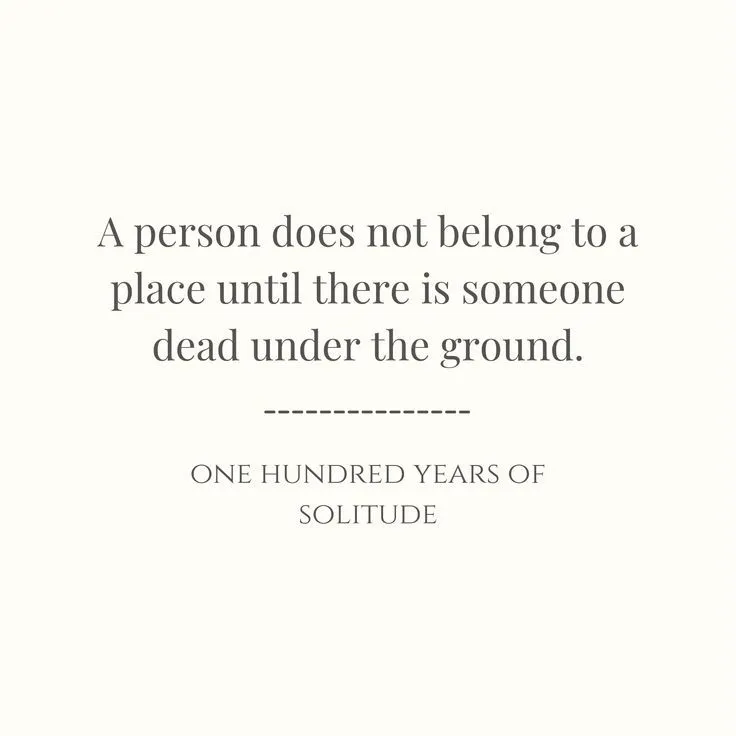
Gabriel García Márquez’s One Hundred Years of Solitude is a dazzling fusion of history, myth, and magical realism, chronicling the rise and fall of the Buendía family in the fictional town of Macondo. Spanning several generations, the novel captures the cyclical nature of time and history, showing how individuals and nations alike are doomed to repeat their past unless they break free of it.
The novel is rich with symbolic meaning, drawing on Latin American history, politics, and folklore. Through its vivid characters from the idealistic patriarch José Arcadio Buendía to the tragic Remedios the Beauty, Márquez explores themes of solitude, obsession, and the passage of time. The fantastical elements, such as flying carpets and ghostly visitations, are seamlessly woven into the everyday, giving the novel a dreamlike, mythic quality.
Stylistically, Márquez’s prose is lush and evocative, filled with long, flowing sentences that mimic the rhythm of oral storytelling. One Hundred Years of Solitude is a novel that demands your full attention, but rewards it with beauty, complexity, and profound insight. It’s a landmark of world literature. A book that expands the possibilities of what fiction can be.
Book Info- Author: Gabriel García Márquez
- Published: 1967
- Genre: Magical Realism / Literary Fiction
- Length: 417 pages
- Topic: Family legacy, Latin American history, time, solitude
Best Fantasy Books of All Time
Fantasy is where imagination reigns supreme. In these stories, dragons fly, ancient prophecies unfold, and heroes rise from the unlikeliest of places. The best fantasy books of all time transport readers into rich, immersive worlds where magic isn’t just a plot device, it’s a way of life. These books expand the boundaries of storytelling, weaving together mythology, adventure, and emotional depth in a way no other genre can.
Whether it’s epic quests across vast kingdoms, intimate battles of good and evil, or the quiet wonder of discovering a hidden world, fantasy speaks to our deepest yearnings: for freedom, for identity, and for meaning. In this section, we’ll explore three masterpieces that have shaped modern fantasy and continue to capture the hearts of readers across generations.
The Lord of the Rings
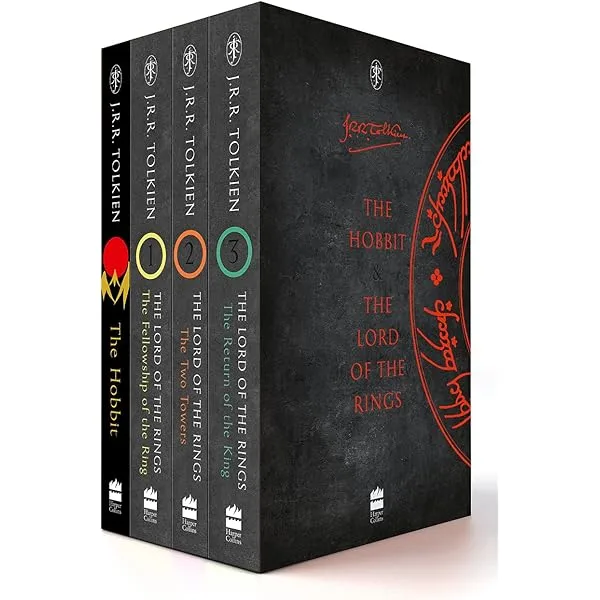
J.R.R. Tolkien’s The Lord of the Rings isn’t just a fantasy novel. It’s the blueprint for the entire genre. Set in the meticulously crafted world of Middle-earth, the story follows Frodo Baggins, a humble hobbit entrusted with the fate of the world. His task: to destroy the One Ring, a powerful artifact created by the dark lord Sauron. Along the way, Frodo is joined by a diverse fellowship of warriors, wizards, and wanderers, each with their own burdens and destinies.
What sets The Lord of the Rings apart is its incredible depth. Tolkien, a linguist and scholar, created languages, histories, genealogies, and cultures for his world making Middle-earth feel as real and lived-in as our own. But at its core, this epic is about courage, friendship, sacrifice, and the quiet heroism of ordinary individuals. Frodo’s struggle with the Ring mirrors the internal battles we all face: the temptation of power, the fear of failure, and the price of perseverance.
Stylistically, Tolkien’s writing is grand and poetic, evoking the cadence of myth and legend. The landscapes from the serene beauty of the Shire to the volcanic wasteland of Mordor are described with painterly precision. Though the trilogy can be dense, the emotional payoff is immense. The Lord of the Rings remains a towering achievement in literature, a tale of hope that continues to inspire generations of readers and creators alike.
Book Info- Author: J.R.R. Tolkien
- Published: 1954–1955
- Genre: Epic Fantasy
- Length: ~1,200 pages (trilogy)
- Topic: Good vs. evil, heroism, friendship, power
A Game of Thrones
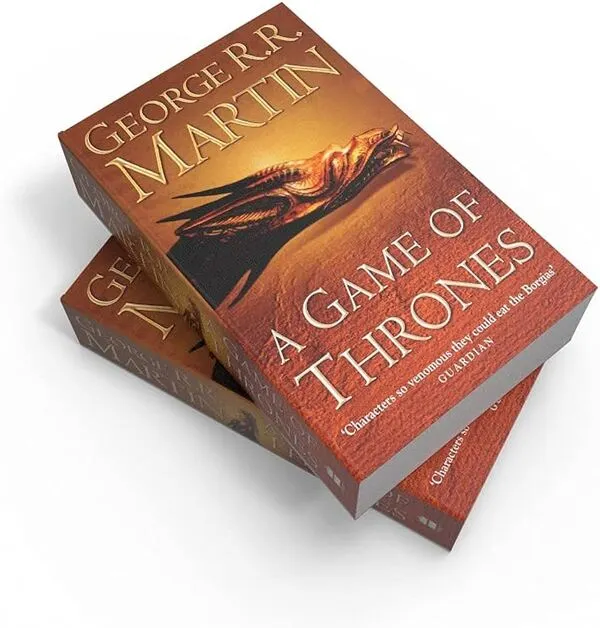
George R.R. Martin’s A Game of Thrones, the first book in the A Song of Ice and Fire series, redefined modern fantasy with its gritty realism, political complexity, and moral ambiguity. Far from the idealistic tone of classic fantasy, Martin introduces readers to Westeros — a medieval realm teeming with rival houses, shadowy plots, and no shortage of betrayal. Here, no character is safe, and no throne is ever truly secure.
The brilliance of Martin’s world lies in its realism. Though there are dragons, magic, and ancient prophecies, the real danger comes from ambition, pride, and vengeance. Characters are neither purely good nor evil, but deeply human. Flawed, passionate, and unpredictable. Eddard Stark’s sense of honor, Daenerys Targaryen’s struggle for identity, Tyrion Lannister’s wit and survival each arc is woven with care, creating a tapestry of interlocking stories that feel both epic and intimate.
Martin’s prose is immersive and cinematic, filled with political intrigue, visceral battle scenes, and unforgettable dialogue. The unpredictable nature of the narrative keeps readers constantly on edge and deeply invested. While the full series is still unfinished, A Game of Thrones stands as a monumental first entry in what has become one of the most influential fantasy sagas of all time.
Book Info- Author: George R.R. Martin
- Published: 1996
- Genre: Dark Fantasy / Political Intrigue
- Length: 694 pages
- Topic: Power, betrayal, family legacy, war
Harry Potter and the Philosopher’s Stone
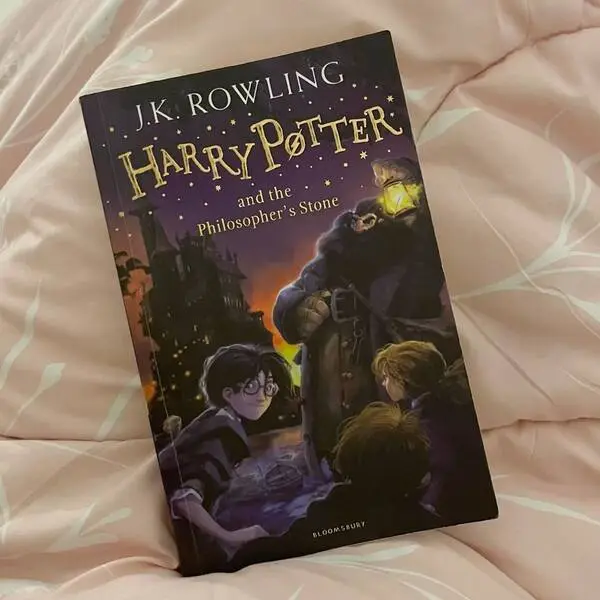
J.K. Rowling’s Harry Potter and the Philosopher’s Stone (or Sorcerer’s Stone in the U.S.) introduced readers to a magical world hidden within our own and changed the literary landscape forever. When orphaned Harry discovers on his eleventh birthday that he is, in fact, a wizard, he’s whisked away to Hogwarts School of Witchcraft and Wizardry. There, he uncovers not only the truth about his past but also a destiny bound to the dark wizard Voldemort.
While the novel begins with a familiar “chosen one” trope, Rowling quickly sets herself apart with her immersive world-building, charming characters, and balance between lighthearted adventure and dark undercurrents. The halls of Hogwarts feel both fantastical and cozy. A place where moving staircases, enchanted feasts, and magical creatures coexist with themes of friendship, loss, and courage.
Beyond the magic, Rowling’s storytelling emphasizes the importance of love, loyalty, and standing up to injustice. The first book sets the tone for a series that matures alongside its readers, but even on its own, Philosopher’s Stone is a tightly plotted and emotionally resonant introduction to a world millions have grown up loving. It’s no exaggeration to say that this book sparked a global phenomenon and remains a cornerstone of contemporary fantasy.
Book Info- Author: J.K. Rowling
- Published: 1997
- Genre: YA Fantasy
- Length: 223 pages
- Topic: Magic, friendship, identity, destiny
Best Sci-Fi Books of All Time
Science fiction is the genre of possibilities. A creative playground where writers imagine futures shaped by technology, society, and human ambition. The best sci-fi books of all time don’t just entertain; they challenge us to think. What happens when machines become smarter than their creators? What does it mean to be human in a world of clones, AI, or interstellar travel? These novels stretch the boundaries of the known and venture deep into the unknown, often revealing uncomfortable truths about the present in the process.
Great sci-fi strikes a balance between imagination and introspection. Whether set on distant planets or in dystopian futures eerily similar to our own, these stories explore ethical dilemmas, identity, power, and survival. Below, we delve into three masterpieces that continue to influence not only literature, but also science, philosophy, and popular culture.
Dune

Frank Herbert’s Dune is a monumental achievement in science fiction. An epic saga of politics, religion, ecology, and destiny set on the desert planet of Arrakis. At the center of the story is Paul Atreides, heir to a noble family tasked with overseeing the dangerous but valuable spice-mining operations on Arrakis. As betrayal and rebellion unfold, Paul finds himself entangled in ancient prophecies and a struggle that could reshape the galaxy.
What makes Dune extraordinary is its layered world-building. Herbert creates a complex universe filled with intricate cultures, spiritual philosophies, and ecological warnings that feel deeply prescient today. The spice melange, the planet’s coveted resource isn’t just a MacGuffin; it’s a metaphor for addiction, power, and the cost of exploitation. The Fremen people, with their fierce independence and deep connection to the land, embody themes of survival and resistance that still resonate.
Herbert’s writing is dense, poetic, and philosophical, making Dune both a cerebral and thrilling experience. It's a novel that demands and rewards patient, immersive reading. From its rich political intrigue to its meditation on fate and free will, Dune is more than just a space opera; it's a work of art that laid the foundation for modern sci-fi storytelling.
Book Info- Author: Frank Herbert
- Published: 1965
- Genre: Science Fiction / Epic
- Length: 412 pages
- Topic: Power, prophecy, ecology, revolution
Neuromancer
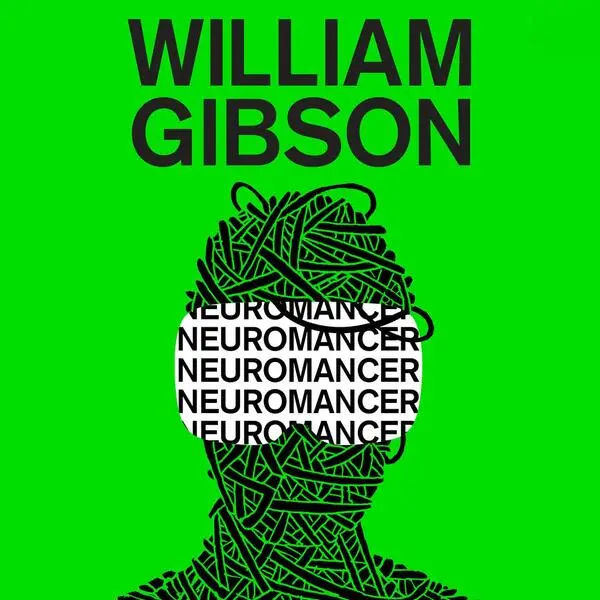
William Gibson’s Neuromancer didn’t just predict the future, it created it. This groundbreaking novel introduced readers to cyberspace years before the internet became mainstream and helped define the cyberpunk subgenre. The story follows Case, a washed-up hacker hired by a mysterious employer for one last job. A heist that will blur the line between human consciousness and artificial intelligence.
Set in a gritty, neon-soaked future filled with AI entities, corporate overlords, and rogue programs, Neuromancer is both a thriller and a philosophical inquiry into technology’s grip on society. The novel grapples with questions of identity, autonomy, and the merging of man and machine. Its atmosphere is dense and disorienting, capturing the feeling of living in a hyperconnected, hyper-commercialized world. A feeling even more relevant today.
Gibson’s prose is sharp, fast-paced, and often poetic, mirroring the electric chaos of the world he builds. While the plot can be complex, the vision behind it is razor-clear: technology may liberate us, but it can just as easily enslave us. Neuromancer was decades ahead of its time, and its influence can be seen everywhere from The Matrix to modern tech discourse.
Book Info- Author: William Gibson
- Published: 1984
- Genre: Cyberpunk / Sci-Fi Thriller
- Length: 271 pages
- Topic: AI, cybernetics, consciousness, corporate control
The Left Hand of Darkness
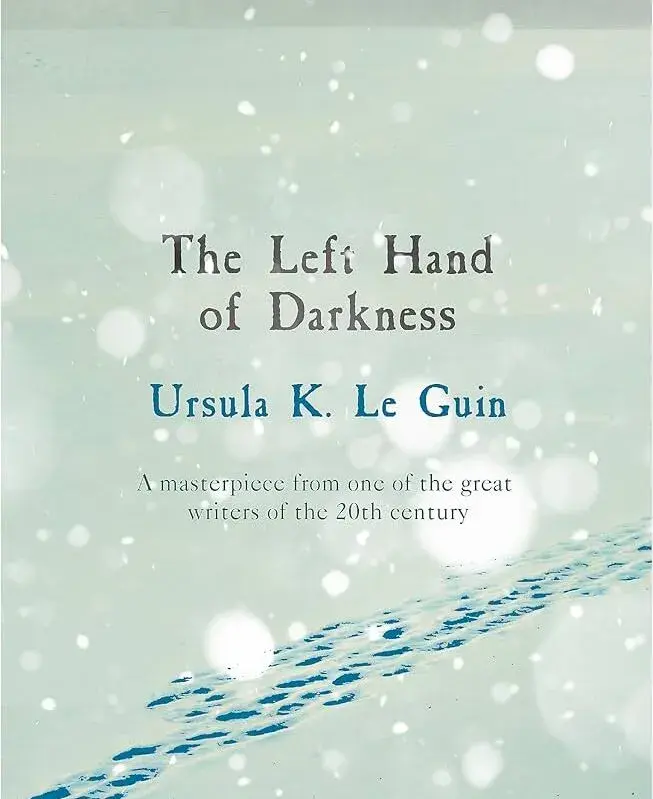
Ursula K. Le Guin’s The Left Hand of Darkness is a visionary work that blends science fiction with deep philosophical and sociological inquiry. Set on the icy planet of Gethen, the novel follows Genly Ai, an envoy from a galactic alliance, as he attempts to persuade the Gethenians to join the collective. But the real story lies in Genly’s struggle to understand and be understood by a society with no fixed gender.
Gethenians are ambisexual beings who adopt male or female characteristics only during mating cycles. This concept allows Le Guin to deconstruct gender norms and explore how society might function without rigid binaries. The novel is both a political thriller and an intimate study of alienation, empathy, and cultural misunderstanding. As Genly forges a fragile alliance with Estravan, a Gethenian politician, their journey across a deadly ice field becomes a metaphor for connection across difference.
Le Guin’s writing is elegant and introspective, balancing scientific plausibility with mythic resonance. The Left Hand of Darkness doesn’t rely on flashy tech or action; its power lies in its ideas and its emotional depth. It remains one of the most important and thought-provoking works in science fiction, asking questions about identity, otherness, and what it means to truly understand another being.
Book Info- Author: Ursula K. Le Guin
- Published: 1969
- Genre: Philosophical Sci-Fi / Social Sci-Fi
- Length: 304 pages
- Topic: Gender, politics, cultural exchange, isolation
Best Horror Books of All Time
There’s something irresistibly thrilling about fear especially when it's safely tucked between the covers of a book. The best horror books of all time do more than just scare us. They tap into primal anxieties, twist everyday situations into waking nightmares, and linger in our minds long after the final page. Great horror isn’t only about ghosts and monsters; it’s about dread, atmosphere, and the dark corners of human nature.
From psychological terrors to supernatural encounters, horror fiction gives us a safe space to confront our deepest fears; death, madness, the unknown. The classics in this category have defined what it means to truly unsettle a reader. In the selections below, we dive into stories that have chilled generations and continue to redefine the boundaries of fear in fiction.
The Shining
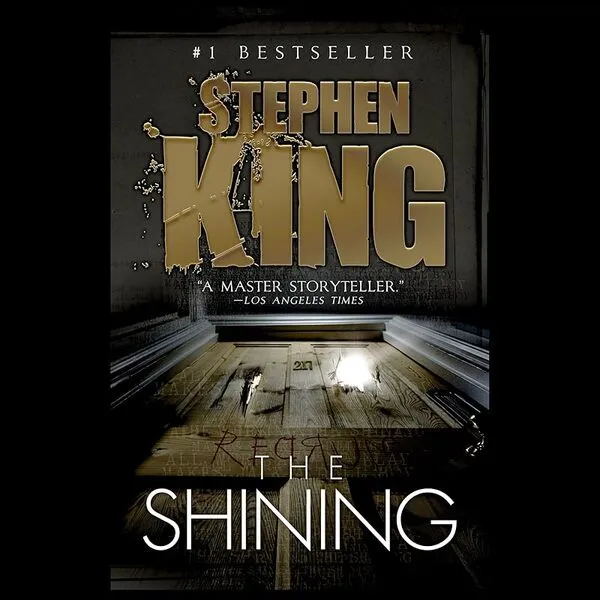
Stephen King's The Shining is a masterclass in psychological horror. Set in the remote Overlook Hotel during a snowed-in winter, the novel follows Jack Torrance a struggling writer and recovering alcoholic who takes a job as the off-season caretaker. With him come his wife Wendy and young son Danny, who possesses a psychic ability known as “the shining.” As isolation deepens, malevolent forces in the hotel begin to drive Jack to the brink of insanity.
King doesn’t rely solely on jump scares or gore; instead, he builds a suffocating sense of dread through character development and atmosphere. Jack's descent into madness is both terrifying and tragic, as we watch a man teeter between redemption and total collapse. The Overlook itself becomes a living, breathing entity. A haunted house not just full of ghosts, but one that actively manipulates and feeds on human weakness.
Beyond its supernatural elements, The Shining is a chilling exploration of addiction, violence, and the breakdown of the family unit. King’s prose moves fluidly between slow-burning tension and explosive terror, making it nearly impossible to put the book down. Whether you’re reading it for the first time or revisiting its eerie corridors, The Shining proves why Stephen King remains the king of modern horror.
Book Info- Author: Stephen King
- Published: 1977
- Genre: Psychological Horror
- Length: 447 pages
- Topic: Isolation, madness, addiction, the supernatural
Dracula
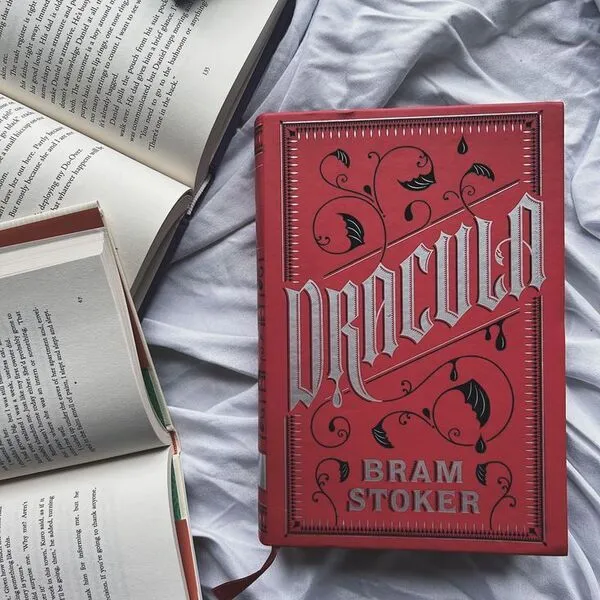
Bram Stoker’s Dracula is the granddaddy of vampire fiction and still one of the most compelling horror stories ever written. Told through diary entries, letters, and newspaper clippings, the novel follows Jonathan Harker’s harrowing encounter with the enigmatic Count Dracula in Transylvania. Soon, Dracula arrives in England, and a group of unlikely allies must join forces to stop his reign of terror.
The genius of Dracula lies in its structure and slow-building tension. Rather than offering immediate scares, Stoker weaves a rich, atmospheric tale that blends gothic horror with themes of sexuality, imperialism, and the fear of the foreign “other.” Dracula himself is less a monster than a symbol of temptation, decay, and an ancient evil encroaching on the modern world. His presence is often felt more than seen, making him all the more terrifying.
Stoker’s prose, while rooted in the Victorian era, remains vivid and readable, filled with evocative descriptions and a creeping sense of unease. The novel’s legacy is immense, influencing everything from modern vampire lore to countless adaptations across film, TV, and theater. Dracula isn’t just a horror classic; it’s the foundation of an entire genre.
Book Info- Author: Bram Stoker
- Published: 1897
- Genre: Gothic Horror
- Length: 418 pages
- Topic: Vampirism, sexuality, fear of the unknown, superstition
The Haunting of Hill House
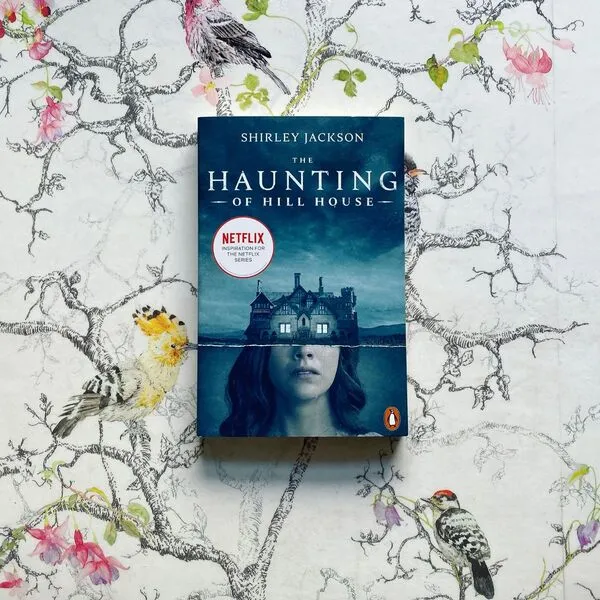
Shirley Jackson’s The Haunting of Hill House is widely regarded as one of the finest haunted house stories ever written. But it’s far more than a tale of bumps in the night. The story centers on Eleanor Vance, a fragile, isolated woman invited to join a small group investigating supernatural phenomena at the notoriously haunted Hill House. As strange occurrences mount, Eleanor begins to unravel and the line between reality and hallucination blur.
Jackson masterfully uses ambiguity to fuel her horror. Is Hill House truly haunted, or is Eleanor losing her grip on sanity? The house itself becomes a psychological mirror, reflecting the fears and desires of those within. Rather than providing clear answers, Jackson leaves readers with an unsettling sense of uncertainty. A fear rooted not in what is seen, but in what is implied.
The novel’s prose is elegant yet eerie, packed with unnerving imagery and emotionally charged introspection. Jackson’s ability to tap into loneliness, repression, and vulnerability gives The Haunting of Hill House a lasting emotional impact. It’s a book that terrifies not just through ghosts, but through the quiet horror of being unseen, unheard, and undone.
Book Info- Author: Shirley Jackson
- Published: 1959
- Genre: Psychological / Supernatural Horror
- Length: 246 pages
- Topic: Mental instability, isolation, the uncanny, haunted spaces
Best Children's Books of All Time
Children’s literature is where many of us first discover the magic of storytelling. The best children's books of all time are those rare gems that not only enchant young readers but also resonate with adults through their wisdom, humor, and emotional depth. These books teach life lessons without preaching, spark creativity without effort, and introduce unforgettable characters that stay with us for a lifetime.
From whimsical adventures to poignant parables, children’s classics often carry more literary power than they’re given credit for. They build moral foundations, encourage empathy, and help children (and grown-ups) make sense of the world. Below are three timeless titles that have inspired generations, stories that every bookshelf deserves to hold.
Charlotte’s Web
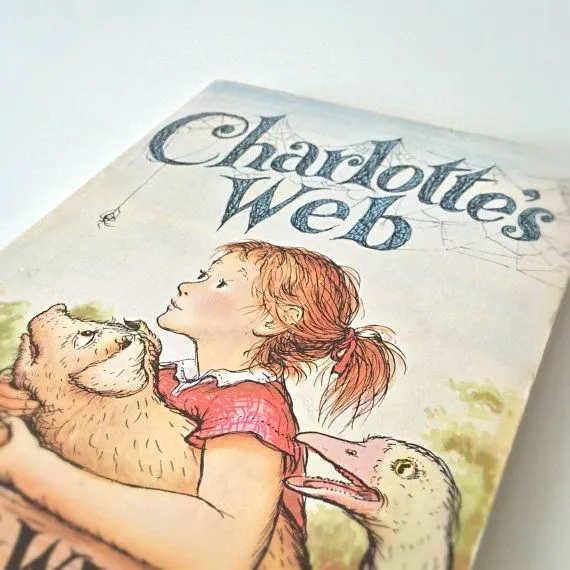
E.B. White’s Charlotte’s Web is a tender and profound tale of friendship, life, and the inevitability of change. At its heart is Wilbur, a naive and lovable pig who befriends Charlotte, a wise and gentle spider living in the rafters of the barn. When Wilbur’s life is threatened, Charlotte weaves words into her web to save him, sparking awe in the human world and revealing the quiet power of compassion.
What makes Charlotte’s Web so impactful is its balance of simplicity and philosophical depth. Children are drawn to the talking animals and the comforting rhythms of farm life, but adults can’t miss the emotional gravity lurking beneath. Charlotte’s act of selflessness and the inevitability of death are handled with remarkable grace, allowing young readers to process difficult themes through the lens of love and loyalty.
White’s prose is understated but lyrical, filled with warmth, gentle humor, and a deep reverence for nature. Each character — from Templeton the selfish rat to Fern the kind-hearted girl — adds richness to the story’s world. Charlotte’s Web isn’t just a story about saving a pig; it’s a quietly powerful meditation on what it means to live a good life and leave something behind.
Book Info- Author: E.B. White
- Published: 1952
- Genre: Children’s Fiction / Animal Fantasy
- Length: 192 pages
- Topic: Friendship, mortality, sacrifice, growing up
Where the Wild Things Are
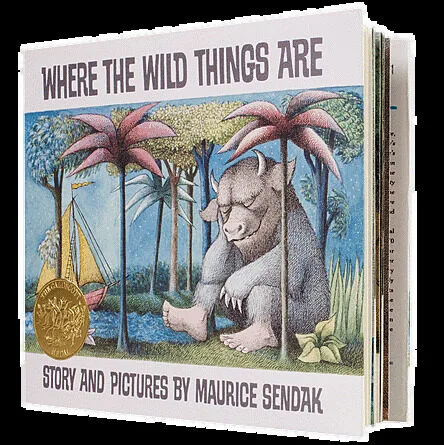
Maurice Sendak’s Where the Wild Things Are is a short picture book with an enormous emotional impact. It tells the story of Max, a mischievous boy who, after being sent to his room without supper, escapes into a fantastical world of wild creatures where he becomes king. Though his rule is thrilling at first, Max eventually longs for the comfort of home and love — realizing that the wildest place isn’t always the best.
Despite its sparse text, the book explores complex themes of anger, imagination, and emotional regulation. Max’s journey is a metaphor for childhood frustration and the need for autonomy, but it also highlights the comfort of unconditional love — symbolized in the hot supper waiting for him at home. Sendak never talks down to his young readers, instead trusting them to understand the emotional truth behind Max’s actions.
Visually, Where the Wild Things Are is stunning. Sendak’s illustrations are both playful and slightly eerie, capturing the strange and beautiful terrain of childhood emotions. The wild things themselves, with their blend of menace and warmth, feel like figments of both dream and nightmare. It’s a story that feels deeply personal yet universally understood — a masterpiece of minimalism with maximum meaning.
Book Info- Author: Maurice Sendak
- Published: 1963
- Genre: Picture Book / Fantasy
- Length: 48 pages
- Topic: Imagination, anger, emotional growth, home
The Little Prince
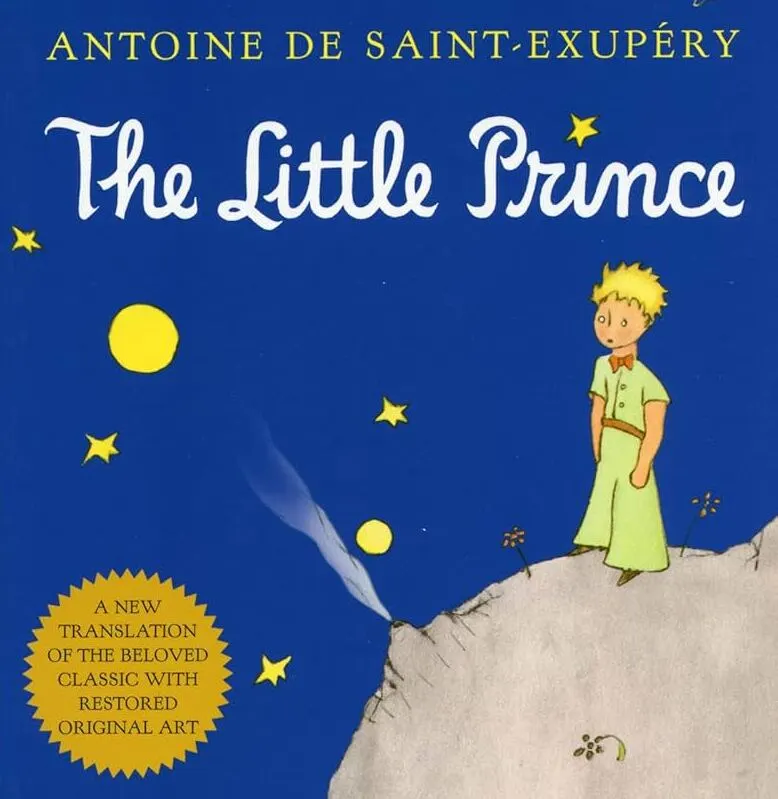
Antoine de Saint-Exupéry’s The Little Prince is a philosophical fable disguised as a children’s book or perhaps the other way around. Narrated by a pilot stranded in the desert, the story follows his encounter with a mysterious young prince from another planet. As the prince recounts his journey across the universe, meeting absurd adult archetypes along the way, readers are offered poignant reflections on love, loss, and the absurdity of grown-up logic.
The book’s central message that “what is essential is invisible to the eye” captures its unique magic. The Little Prince’s relationship with his rose, and later with the fox, speaks to the nature of emotional bonds, responsibility, and the bittersweet beauty of impermanence. Though whimsical and surreal, the story’s emotional resonance is immediate and profound, often hitting harder with age and experience.
Saint-Exupéry’s writing is poetic yet spare, accompanied by his own delicate watercolor illustrations that perfectly capture the book’s dreamlike tone. The Little Prince transcends language and culture, having been translated into hundreds of languages and cherished worldwide. It's not just a children's book. It’s a spiritual guide for anyone who has ever forgotten what it means to look at the world with wonder.
Book Info- Author: Antoine de Saint-Exupéry
- Published: 1943
- Genre: Philosophical Fiction / Children’s Allegory
- Length: 96 pages
- Topic: Innocence, love, loss, the nature of adulthood
Best Self-Improvement Books of All Time
The desire to grow, evolve, and become our best selves is universal. That’s why the best self-improvement books of all time continue to top reading lists year after year. These books go beyond clichés and quick fixes. They offer practical wisdom, transformative habits, and mindset shifts that empower readers to take control of their lives. Whether you're looking to build confidence, improve productivity, or simply gain clarity in a chaotic world, these books are trusted guides on the journey of personal growth.
What makes a self-help book truly great isn’t just its popularity, it’s the lasting impact it has on people’s lives. The books below have helped millions to change how they think, work, love, and live. With relatable stories, science-backed strategies, and actionable advice, these timeless titles are essential reads for anyone serious about self-development.
Atomic Habits
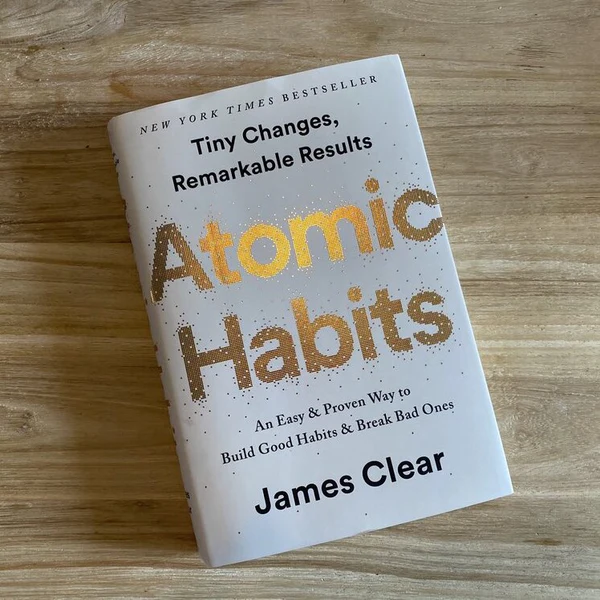
James Clear’s Atomic Habits has quickly become a modern classic in the self-improvement world and for good reason. The book breaks down habit formation into a science-backed system that's both accessible and highly actionable. Clear argues that success doesn't come from massive overnight change, but from small, consistent improvements that compound over time what he calls "atomic habits."
At the heart of the book is the idea that our environment, identity, and systems matter more than sheer willpower. By focusing on changing the process rather than the outcome, Clear empowers readers to build better routines that align with who they want to become. Whether you're trying to quit bad habits or start positive ones, Atomic Habits gives you a clear framework built on real behavioral psychology.
Clear’s writing is concise, motivating, and full of real-life examples, making the book not only informative but also enjoyable to read. The strategies like habit stacking, the two-minute rule, and the four laws of behavior change are instantly applicable and adaptable to any area of life. It’s a must-read for anyone who wants to improve their habits and, ultimately, their future.
Book Info- Author: James Clear
- Published: 2018
- Genre: Self-Improvement / Productivity
- Length: 320 pages
- Topic: Habit formation, behavior change, productivity, identity
The 7 Habits of Highly Effective People
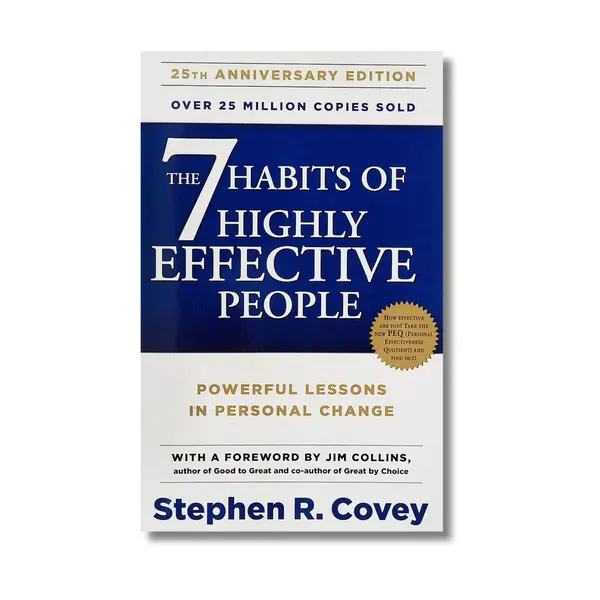
Stephen R. Covey’s The 7 Habits of Highly Effective People is one of the most influential personal development books ever written. First published in 1989, its principles have stood the test of time and are still widely taught in leadership seminars, corporate training, and personal coaching programs. Covey’s central thesis is that true success comes not just from external achievement, but from cultivating internal character and aligning actions with timeless principles.
The book is divided into seven core habits, ranging from being proactive and setting clear goals to synergizing with others and engaging in continuous self-renewal. Covey emphasizes a “paradigm shift”. A fundamental change in how we perceive the world and our place in it. His insights challenge readers to move from a reactive mindset to one that’s purpose-driven, accountable, and deeply values-oriented.
What sets The 7 Habits apart is its holistic approach. It addresses personal, professional, and interpersonal development in a balanced and structured way. Covey’s use of anecdotes, diagrams, and actionable exercises ensures that the lessons are not only understood but lived. It’s a book that encourages deep reflection and lifelong practice, making it a cornerstone of the self-help genre.
Book Info- Author: Stephen R. Covey
- Published: 1989
- Genre: Self-Development / Leadership
- Length: 381 pages
- Topic: Productivity, personal leadership, values, mindset
Thinking, Fast and Slow
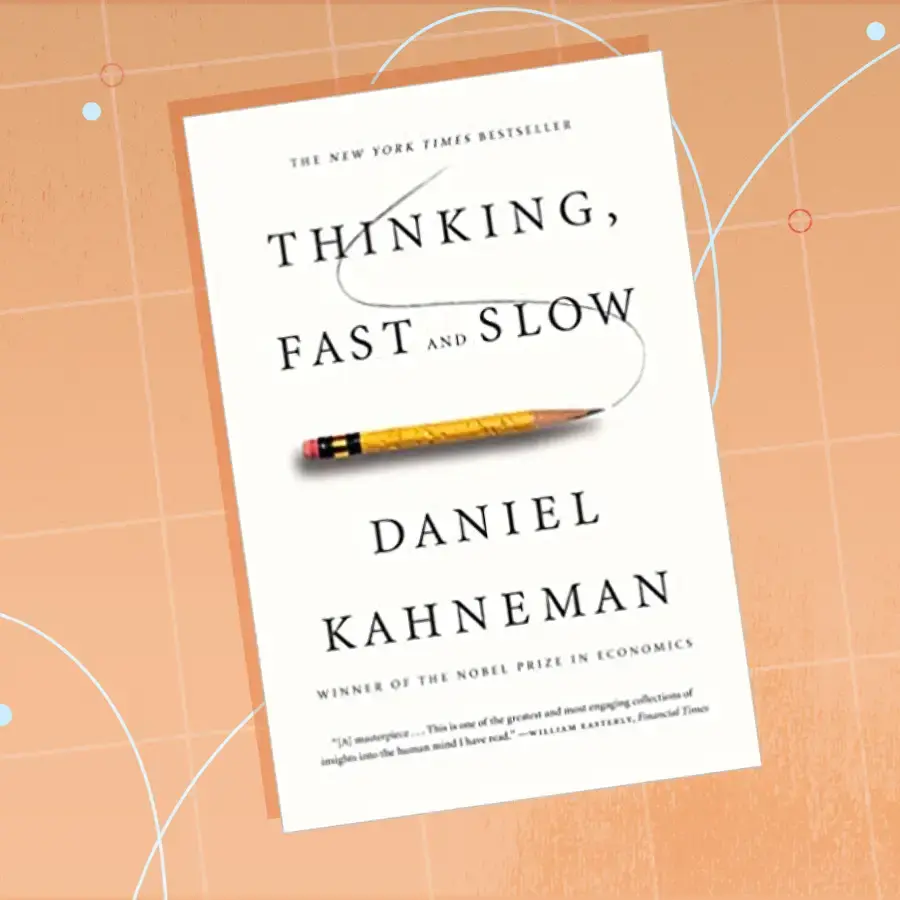
Daniel Kahneman’s Thinking, Fast and Slow is not your typical self-help book. It’s a deep dive into the way we think, make decisions, and often, fool ourselves. Written by a Nobel Prize-winning psychologist, the book introduces the concept of two systems of thought: System 1 (fast, intuitive, emotional) and System 2 (slow, deliberate, logical). Understanding how these systems interact is key to improving decision-making, reducing bias, and becoming more self-aware.
Kahneman explains how our brains are wired for efficiency, not accuracy. We rely on mental shortcuts (heuristics) that can lead us astray, especially in areas like money, health, and relationships. From the illusion of control to overconfidence bias, the book reveals the hidden forces that influence how we interpret the world and why we often get it wrong.
Though grounded in behavioral economics and psychology, the writing is accessible and peppered with real-life studies and relatable examples. While it's more intellectual than most self-help books, its insights are incredibly practical. Thinking, Fast and Slow doesn't just change what you know. It changes how you think. For anyone interested in leveling up their cognitive game, this book is a must-read.
Book Info- Author: Daniel Kahneman
- Published: 2011
- Genre: Psychology / Decision-Making / Self-Improvement
- Length: 499 pages
- Topic: Cognitive bias, decision-making, rational thinking, behavioral science
Best History Books of All Time
History isn't just a record of what happened — it's a mirror reflecting who we are, how we got here, and where we might be headed. The best history books of all time go beyond dry dates and names. They bring the past to life through vivid storytelling, meticulous research, and powerful insights that help us understand the present. These are the books that turn history from a subject into an experience — engaging, enlightening, and often unexpectedly emotional.
Whether you're interested in sweeping global narratives, focused biographies, or deep dives into specific events, these classics offer more than facts; they provide context and perspective. From the rise and fall of empires to revolutions that reshaped the world, the books below explore history in a way that’s both intellectually satisfying and deeply human.
Sapiens: A Brief History of Humankind

Yuval Noah Harari’s Sapiens takes on the ambitious task of telling the entire history of the human species and succeeds brilliantly. Starting from the emergence of Homo sapiens in the Stone Age and tracing all the way to modern society, Harari explores how biology, culture, economics, and ideology shaped the world as we know it. The result is a compelling, provocative, and often mind-bending narrative that challenges everything we think we know about ourselves.
What sets Sapiens apart is Harari’s ability to distill complex concepts into clear, engaging language. He doesn’t just recount historical events; he interprets them, asks difficult questions, and makes bold connections. Why did agriculture create more suffering than hunting and gathering? How did myths like religion and money unify millions of people? Harari doesn’t shy away from controversy, and that’s part of what makes the book so addictive.
The book is rich in insight and perspective, often prompting readers to reexamine their own values, beliefs, and assumptions. Whether you’re a history buff or a casual reader, Sapiens is a transformative read a history book that’s as much about the future as it is about the past.
Book Info- Author: Yuval Noah Harari
- Published: 2011
- Genre: World History / Anthropology
- Length: 443 pages
- Topic: Human evolution, culture, economy, society
Guns, Germs, and Steel
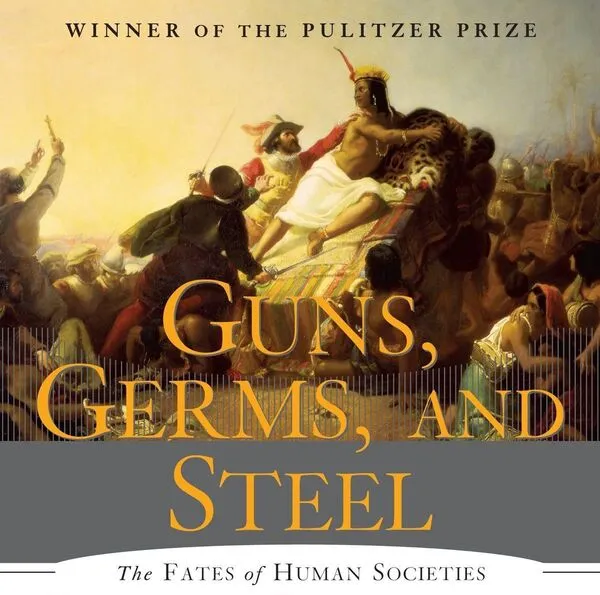
Jared Diamond’s Guns, Germs, and Steel tackles one of the biggest questions in human history: why did some civilizations advance rapidly while others remained relatively static? Diamond argues that geography, environment, and biology rather than racial or cultural superiority, largely determined the course of global development. His thesis reframes history as a story shaped by environmental luck, rather than individual genius or military conquest alone.
Diamond traces the roots of inequality back to the domestication of plants and animals, the spread of disease, and the geographical advantages of certain continents. He demonstrates how Eurasian societies were positioned to develop technology, complex institutions, and military power faster than others not because of innate intelligence, but because of where they happened to live. It’s a sweeping, data-driven explanation for the global imbalances we still see today.
The book combines anthropology, biology, ecology, and history in a way that’s deeply interdisciplinary and intellectually thrilling. Though some of its conclusions have sparked debate, Guns, Germs, and Steel remains a landmark work. A bold, ambitious attempt to answer history’s hardest questions with logic, science, and storytelling.
Book Info- Author: Jared Diamond
- Published: 1997
- Genre: Historical Sociology / Geography
- Length: 480 pages
- Topic: Civilization, inequality, environmental determinism, global development
The Diary of a Young Girl
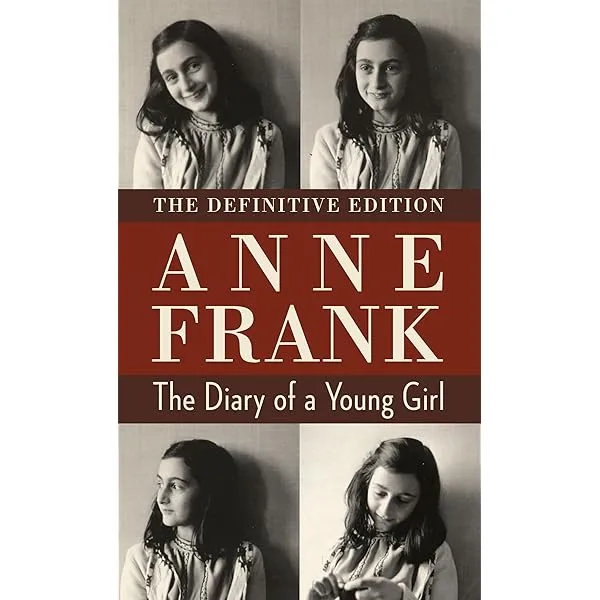
Anne Frank’s The Diary of a Young Girl isn’t a conventional history book but its historical value is immeasurable. Written while Anne and her family hid from the Nazis in a secret annex in Amsterdam during World War II, the diary offers a raw, intimate, and profoundly human perspective on one of the darkest periods in modern history. It’s a document of both horror and hope, capturing the daily struggles of a girl coming of age under the shadow of genocide.
Anne's voice is wise beyond her years, yet filled with the typical worries, dreams, and frustrations of adolescence. This contrast between the normalcy of her thoughts and the abnormality of her circumstances gives the diary its emotional power. Readers don’t just learn about the Holocaust; they feel its weight through Anne’s words, making history deeply personal and unforgettable.
More than 75 years after her death, Anne Frank remains a symbol of resilience, innocence, and the enduring human spirit. Her diary has been translated into over 70 languages and continues to be read in classrooms and homes around the world. It stands not only as a record of the past, but as a call to remember and to resist hatred in all its forms.
Book Info- Author: Anne Frank
- Published: 1947
- Genre: Autobiography / Holocaust History
- Length: 283 pages
- Topic: WWII, Holocaust, adolescence, survival
Rediscovering the Best Books of All Time
From the dusty corridors of haunted mansions to distant galaxies, and from timeless romances to life-changing philosophies, the best books of all time remind us why we read in the first place to feel, to learn, and to connect. These stories don’t just entertain; they shape who we are and how we see the world. Whether you're seeking escapism, enlightenment, or simply a great tale well told, there's something transformative waiting in every category we've explored.
And remember. Reading doesn’t have to mean carving out hours of quiet time. With today’s incredible audiobook options (linkini buraya ekleyebilirsin), even the busiest booklover can stay immersed in these masterpieces while on the go. Don’t forget to bookmark this guide and come back whenever you need your next great read or explore our other curated lists to keep your TBR pile stacked with only the best.

